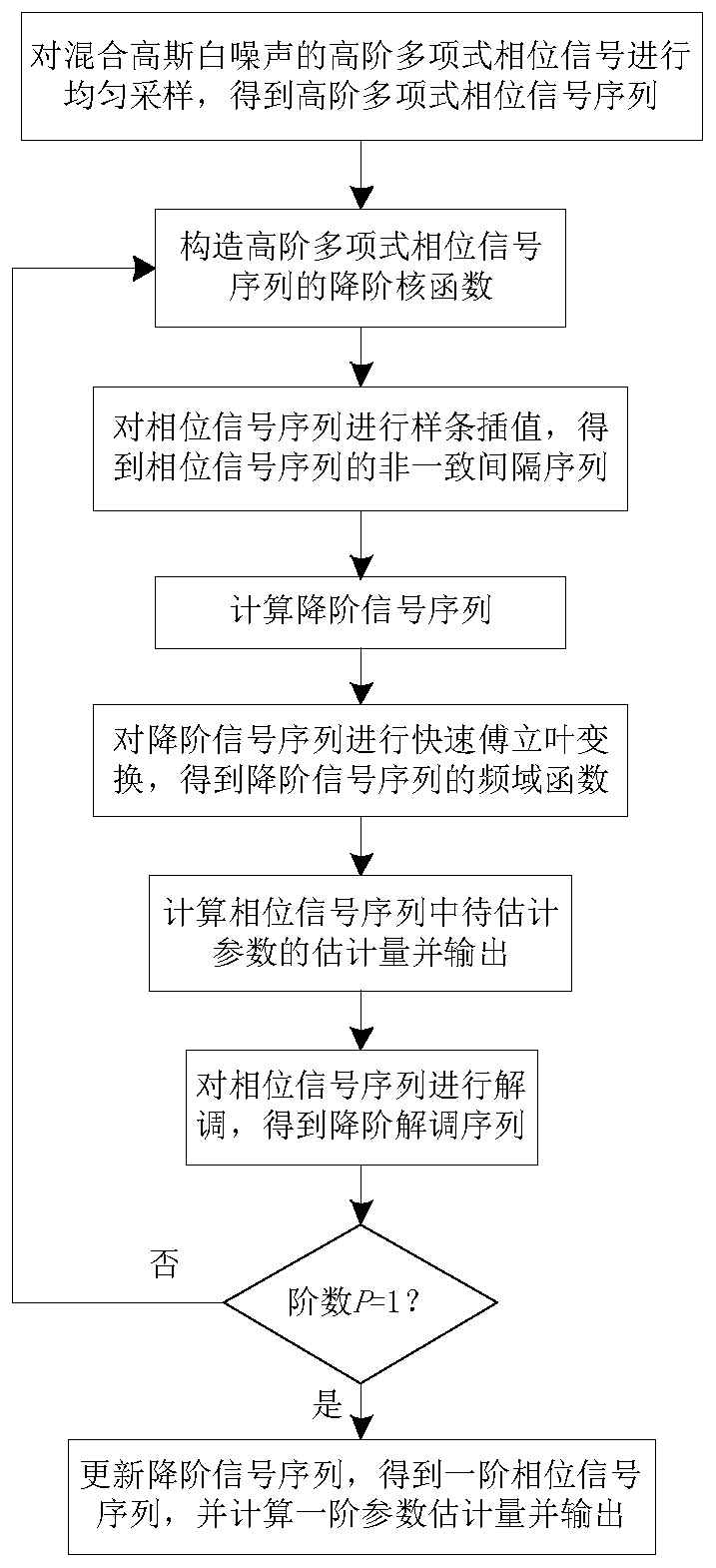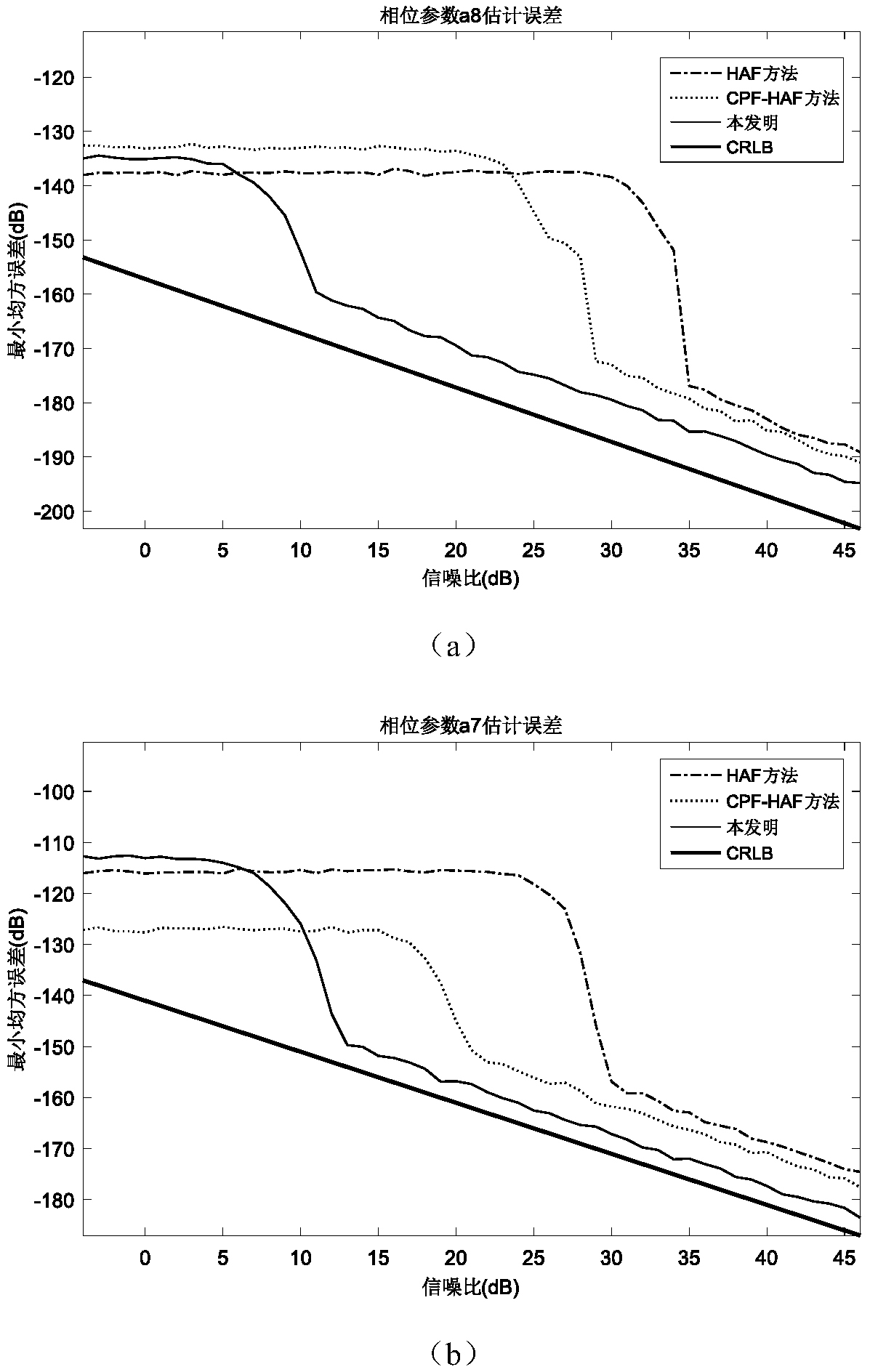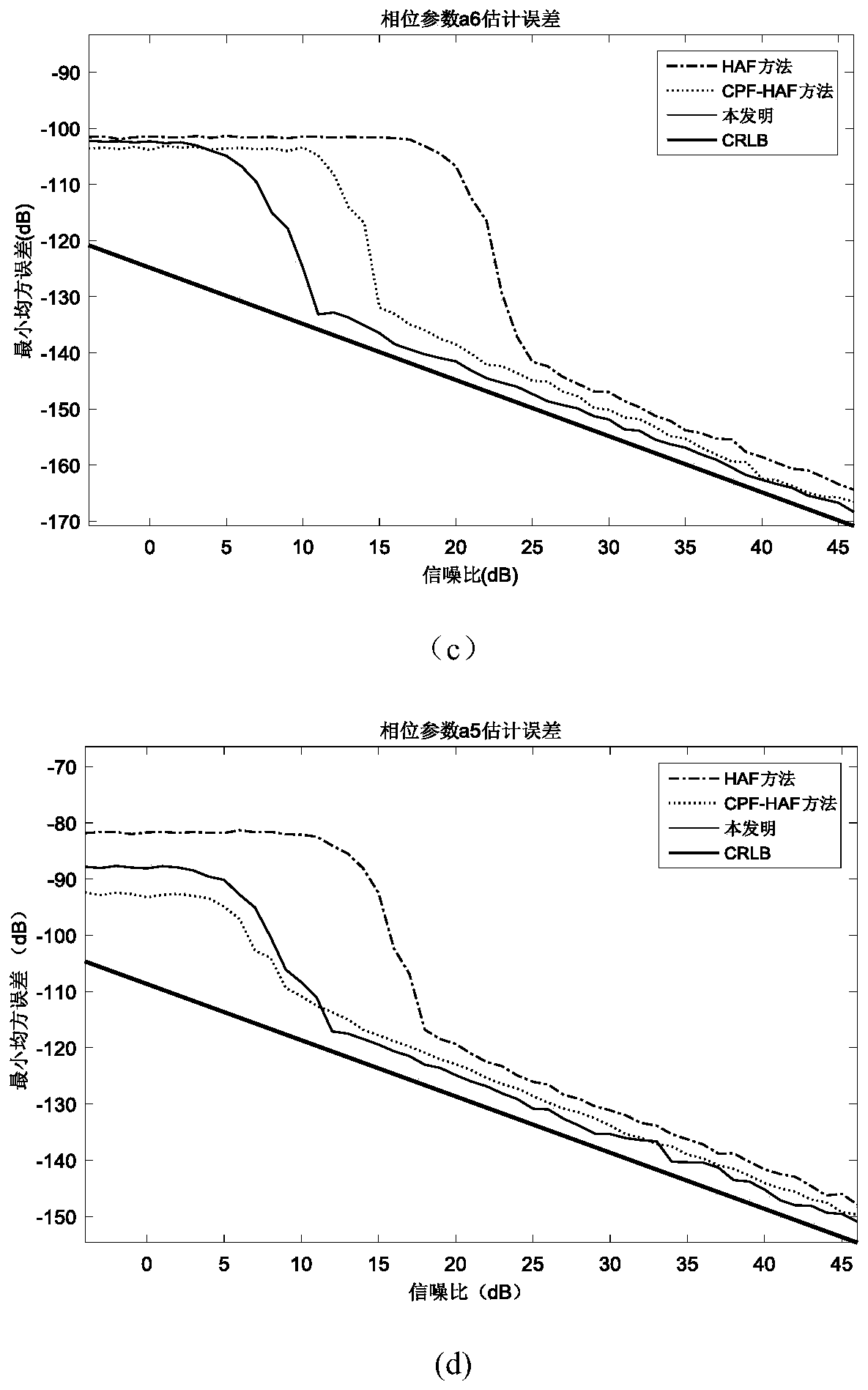Parameter estimation method of high-order polynomial phase signal based on reduced-order kernel function
A high-order polynomial and phase signal technology, applied in the direction of electrical digital data processing, calculation, complex mathematical operations, etc., can solve the problem of low estimation accuracy, achieve the effects of reducing nonlinearity, improving accuracy, and eliminating high estimation thresholds
- Summary
- Abstract
- Description
- Claims
- Application Information
AI Technical Summary
Problems solved by technology
Method used
Image
Examples
Embodiment Construction
[0032] The present invention will be described in further detail below in conjunction with the accompanying drawings and specific embodiments.
[0033] refer to figure 1 , a high-order polynomial phase signal parameter estimation method based on a reduced-order kernel function, including the following steps:
[0034] Step 1. Uniformly sample the high-order polynomial phase signal x(t) of mixed Gaussian white noise to obtain the high-order polynomial phase signal sequence x(n):
[0035]
[0036] Among them, n is the discrete time variable of the phase signal sequence x(n), w(n) is the Gaussian white noise sequence, Δ is the sampling interval of the phase signal x(t), A 0 is the magnitude of the phase signal x(t), a 1 ,...,a r ,...,a P is the phase parameter to be estimated corresponding to the order r, and P=8 is the highest order number of the phase signal sequence x(n);
[0037] Step 2, use the highest order P of the high-order polynomial phase signal sequence x(n) to...
PUM
 Login to View More
Login to View More Abstract
Description
Claims
Application Information
 Login to View More
Login to View More - R&D
- Intellectual Property
- Life Sciences
- Materials
- Tech Scout
- Unparalleled Data Quality
- Higher Quality Content
- 60% Fewer Hallucinations
Browse by: Latest US Patents, China's latest patents, Technical Efficacy Thesaurus, Application Domain, Technology Topic, Popular Technical Reports.
© 2025 PatSnap. All rights reserved.Legal|Privacy policy|Modern Slavery Act Transparency Statement|Sitemap|About US| Contact US: help@patsnap.com



